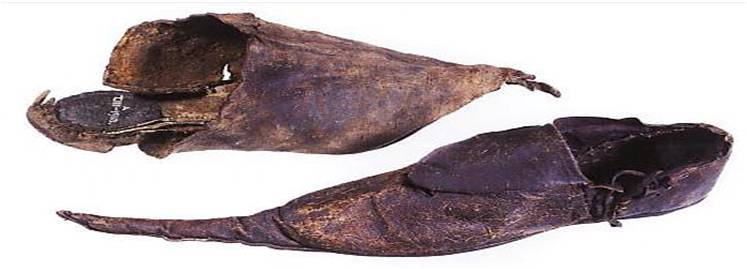“Fashion is about two things: the evolution and the opposite.”
― Karl Lagerfeld
Fashion is a way of life and it keeps on evolving as the years go by. What was “in” years ago will come back with changes. Just take a look at what people from the past consider to be the fashion of their time.
Wigs
Wigs became a fashion trend during 17th century when King Louis XIII of France started to wear one to cover his baldness. Louis XIV continued using it and it became a trend that signifies power and wealth of the noblemen. Since the king was the fashion leader, everyone in the court copied that style which spread throughout the civil society.
It was also extended to women, Mistress of Louis XIV even had a signature style called La Fontange. During that time, wigs were taller and sophisticated, rising one or more feet above the head. By the beginning of 18th century, powdered wigs were more popular. Wigs were coated with powder, making them as white as possible and it was scented to hide any funky smells. The trend died by late 18th century when William Pitt put a tax in wig powder and the society preferred to have short and natural hair.

Bliauts
Bliauts were worn by wealthy men and women in Western Europe and a fashionable garment that was popular for over 100 years. It’s a medieval type of dress, like a loose long gown fitted up to the elbow. Often reaching the ankles and fully fitted at the upper body part with wide sleeves. It has many folds and drapes and has a corset as a part of it’s middle section or just a sash or belt.

Wax Cones
Ancient Egyptians liked to wear accessories, hairpieces and wigs. They love taking care of their bodies as well by bathing frequently, applying perfumes and lathering oils to give their skin moisture. It is also a sign of being fashionable if they wear cones in their head made of oil or perfumed wax. They put it at the top of their heads that will slowly melt and will give a wonderful smell and moisture to their wigs.

Foot Binding
Foot binding was inspired by the story of a 10th century court dancer named Yao Niang who danced in front of Emperor Li Yu in a stage shaped like a lotus flower. Her feet were bound like a crescent moon that made her dance very gracefully that attracted the emperor. The other concubines started to imitate Yao Niang, binding their feet as well to gain favor from the King. It became a trend to the court ladies and was spread throughout the civil society in China.

Ballet Boot
Ballet boot became a fashion trend that started in 1980s and now acts as a fetish footwear. The wearer’s feet will be forced to stand en pointe like a ballet dancer. It was not intended for dancing nor walking and standing for so long. Often used for fashion magazines pictorials and musicians fashion and sometimes use for BDSM play.

Crakows
Crakows is a fashionable shoe style that was popular during 14th and mid- 15th century. It’s a long exaggerated pointed shoe stuffed with moss for support and made of leather or cork. It was named after the city Krakow in Poland where it was originated. Worn by both sexes but it was impractical that it was banned by the king of England.

The Alexandra Limp
Alexandra of Denmark, the wife of King Edward VII started this trend in the 19th century. She was so fashionable that they copied everything she wore or did. She had a complication from childbirth in 1867, a rheumatic fever that made her a cripple. When appeared in public in a walking stick, the fashionable society adopted it as well. Fashionable women tried to achieve her style of walking by using mismatched shoes and they even requested shoemakers to create shoes that will make them look that they had a limp.

Lead-Based Make Up
Red and white lead based skin cream was so popular during 18th century to achieve a porcelain skin. There was a spread of smallpox during that time that most people tried to cover their scars using this skin cream. To have extremely pale complexion, they mix lead powder with vinegar and smothered in their skin. They also applied bright pink spots in a round or triangular shape to their cheeks like a blush using the red mixture. But with prolong use it caused baldness, eyes inflammation and changes in skin color and texture. During this era known as Age of Enlightenment, many men and women were poisoned from the heavy use of lead-based beauty products.

Hoop Skirts
Popular during 1850s, Hoop Skirts is an undergarment worn by women to create a fashionable shape like an hour glass figure. Materials like whalebone or cane were first used then replaced with brass hoops to have it’s more rounder form. In the late 1850s, flattened wire was used as a material that said to be more elastic and strong than brass hoops. It lost it’s appeal to women by 1870s and preferred closely fitted garments.

Corsets
This fashionable item was very popular during the Victorian era, where women and even some men, wore corsets to achieve an hour glass figure. It was used to slim the body, emphasizing curvy figures by exaggerating the hips and the bust to achieve the S-line figure. There were different varieties of corsets through the years, starting from the 16th century as undergarments but initially it was for medical purposes for people with spinal problems, such as scoliosis. There were exaggerated stories about women wearing corsets and it’s effects to their health. One popular legend was in 16th century about ladies in waiting wearing 13 inch corsets required by the Queen of France, Katerina de’ Medici.

